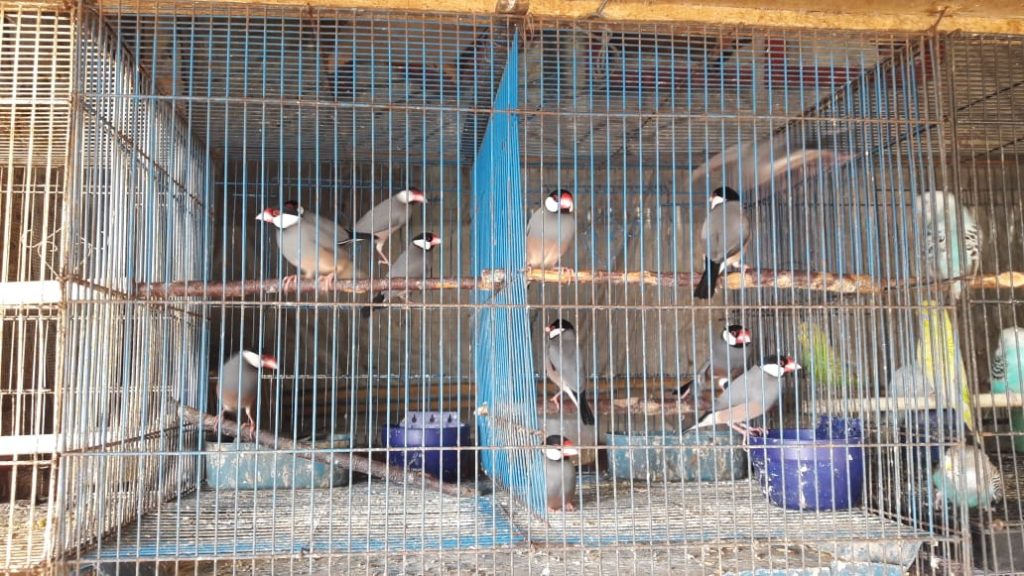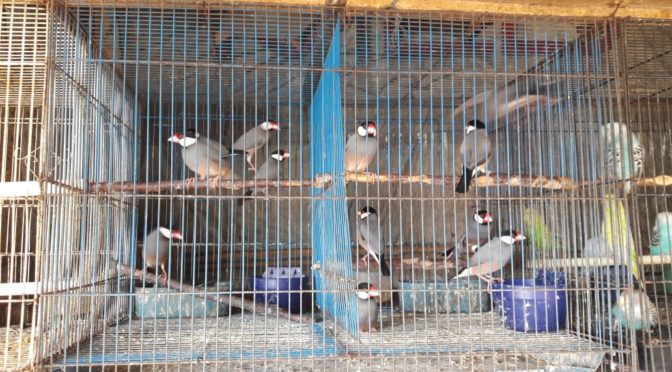Java Sparrow is one of the popular bird originally from Java and Bali. Their striking iridescent looks, red bills,black and white face mask and grayish body plumage make this species become popular-caged bird not only Indonesia.

History and distribution
Javan sparrows have been introduced (both intentionally and unintentionally) to many parts of the world and many states allow the possession and permit to captive-bred this bird. For example,
in Japan, the Java Sparrow is mentioned in a handbook of Japanese foods published in the seventeenth century. In the past, this species was released in Taiwan during religious ceremonies as an offering to the dead. Attempts also has been known at introducing Java Sparrows to North America and the Hawaiian were during the latter half of the nineteenth century but it was unsuccessful. Sightings were first documented in Florida in the mid-1950s and on O‘ahu I., Hawaiian Archipelago, in 1964. In Florida, this species reached a peak in numbers in 1969 but was extirpated during the following decade. In contrast, the population on O‘ahu I. has undergone explosive growth: from 4 birds documented on the Honolulu Christmas Bird Count (CBC) in 1969 to 1,096 tallied on this same count in 1995. In addition, Java Sparrows have expanded their distribution to the islands of Hawai‘i, Kaua‘i, Maui, and Moloka‘i. On Puerto Rico, it is established in the capital of San Juan. Because this species subsists largely on seeds, it poses a potential threat to agricultural grain crops, in particular rice. As a result, the U.S. Department of Agriculture Code of Federal Regulations prohibits the importation of this species into the United States and its territories. However, many states allow the possession and interstate traffic of captive-bred birds.
Conservation status
The status of the Java Sparrow is somewhat paradoxical. Although common to abundant in most of its introduced ranges, its native population has declined severely during the last 2 decades as a direct result of trapping for the cage bird trade. This year sadly IUCN has reclassified this status shifts to be “Endangered” from “Vulnerable” previously. Javan Sparrow is most popular species for caged-bird trade especially Java where we conduct market survey monitoring regularly. It is common to see this species 30-50 birds in each market and we also found there are several individual with distinct uncommon colouration are being sold as a result may be from mutation breeding by traders. We already did our part by submitting report to conservation agency to promote conservation effort. Hopefully you are also willing to join our cause by not purchasing this wild bird that is taken illegally from forest.
AHMAD ARDIANSYAH

